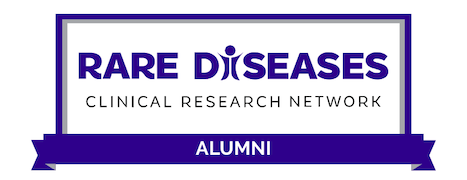Skip to main content
- Abdomen: the part of the human body between the chest and pelvis.
- Abnormal: differing from normal.
- Accumulation, accumulate: the build-up of a substance or the process of acquiring more.
- Acquired: a condition which is not inherited from a parent and is not associated with a genetic mutation. Acquired conditions can develop at any time in life and are triggered by factors external to the patient, regardless of genetics. The majority of cases of Porphyria Cutanea Tarda are acquired.
- Acute: beginning abruptly with marked intensity or sharpness, and then subsiding after a relatively short period. As in “acute porphyria,” those porphyrias characterized by sudden attacks of intense pain and other typical symptoms, typically lasting days or weeks.
- Acute attack: the phase of an acute porphyria attack which is particularly severe.
- Acute Intermittent Porphyria (AIP): an acute type of hepatic porphyria resulting from a deficiency of the enzyme, hydroxymethylbilane synthase (HMB-synthase).
- ALA-Dehydratase Deficiency Porphyria (ADP): an acute type of hepatic porphyria resulting from a deficiency of the enzyme, ALA-dehydratase.
- Aminolevulinic acid (ALA): an intermediate compound in the heme biosynthesis pathway; accumulates in ADP and in the acute porphyrias during an acute attack.
- Aminolevulinic acid dehydratase (ALA-D): the second enzyme in the heme biosynthesis pathway; its deficiency results in ALA-Dehydratase Deficiency Porphyria (ADP).
- Aminolevulinic acid synthase (ALA-Synthase or ALAS): the first enzyme in the heme biosynthesis pathway; a deficiency results in X-linked sideroblastic anemia, and a “gain of function” results in X-linked protoporphyria (XLP).
- Amniocytes: cells in the amniotic fluid surrounding the fetus before birth.
- Amniotic fluid: the fluid surrounding the fetus inside the uterus.
- Analgesic: a drug or medicine used to relieve pain, for example ibuprofen or acetaminophen.
- Analysis: examination to discover characteristics or meanings.
- Anemia: a decrease in normal number of red blood cells (RBCs) or less than the normal quantity of hemoglobin in the blood.
- Anticonvulsant: drugs used for the prevention of seizures. Many older anticonvulsants are very dangerous in the acute pophryias.
- Antidiuretic: a drug that helps control body water balance by reducing urination.
- Antidiuretic hormone (ADH): a product made by the hypothalamus and transported to the pituitary gland, with the major purpose of promoting reabsorption of water in the kidneys.
- Assay: assessment of characteristics (as weight, measure, or quality).
- Asymptomatic carrier: a person who has inherited a gene that causes a disorder but does not show symptoms.
- Attack: an active episode of a chronic or recurrent condition.
- Autonomic nervous system: controls the smooth muscle of the internal organs and glands.
- Autosomal dominant: one of several ways that a disorder, trait, or disease can be passed down through families. An autosomal dominant disorder means that one copy of an abnormal gene on one pair of autosomes (non-sex determining chromosomes) must be present in order for the disorder, trait, or disease to develop. If a parent carries the abnormal gene for a specific disorder, each of his or her children have a 50% risk for also having the disease. The acute porphyrias (AIP, HCP, and VP) and familial PCT follow this pattern of inheritance.
- Autosomal recessive: one of several ways that a disorder, trait, or disease can be passed down through families. An autosomal recessive disorder means that two copies of an abnormal gene on one pair of autosomes (non-sex determining chromosomes) must be present in order for the disorder, trait, or disease to develop. If both parents carry the abnormal gene for a specific disorder, each of their children are at a 25% risk for having the disease. Erythropoietic protoporphyria (EPP), congenital erythropoietic porphyria (CEP), and ALA-Dehydratase Porphyria (ADP) follow this pattern of inheritance.
- Autosomes: the 22 non-sex determining chromosomes (that is, all the chromosomes except X and Y).

